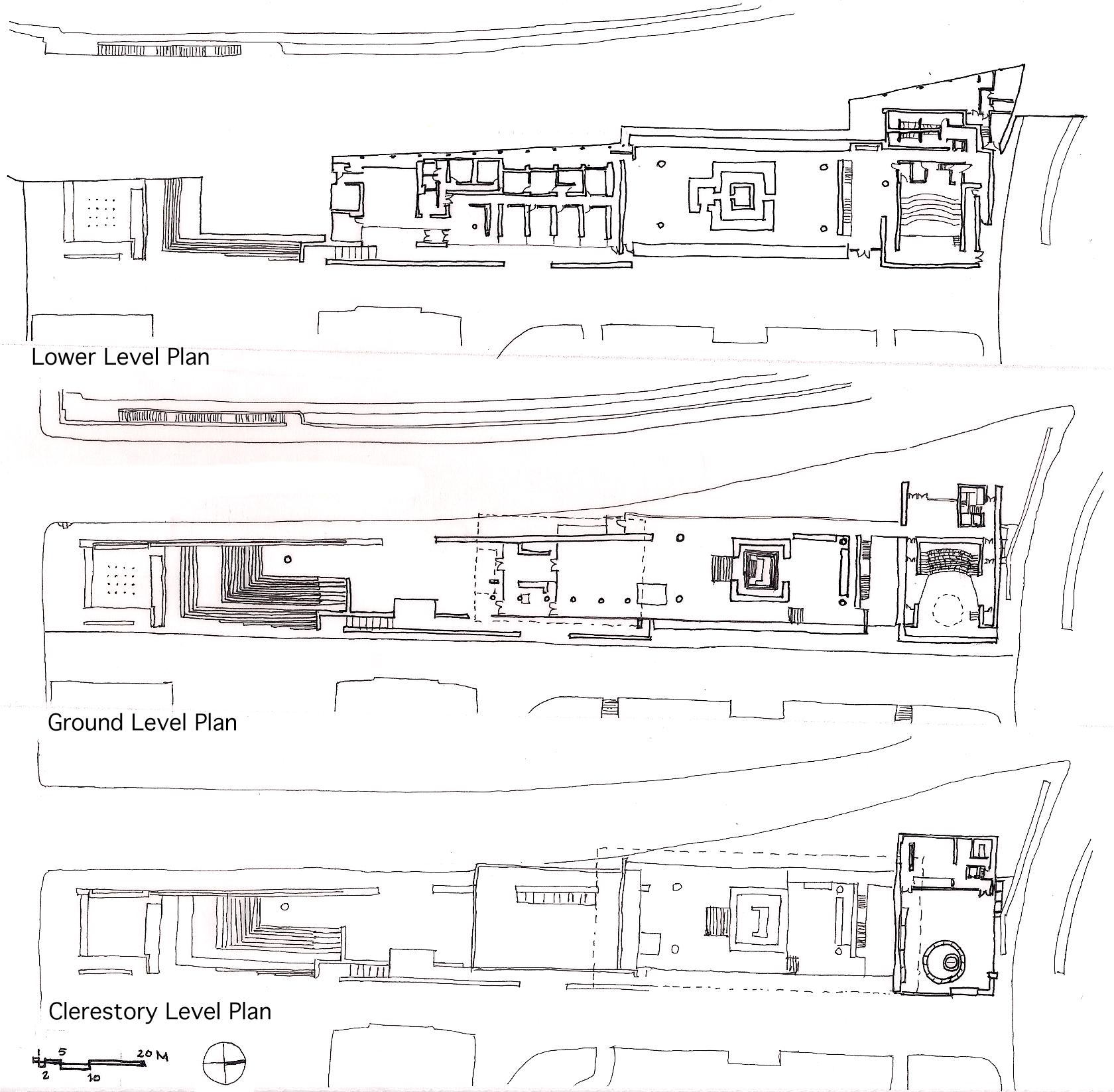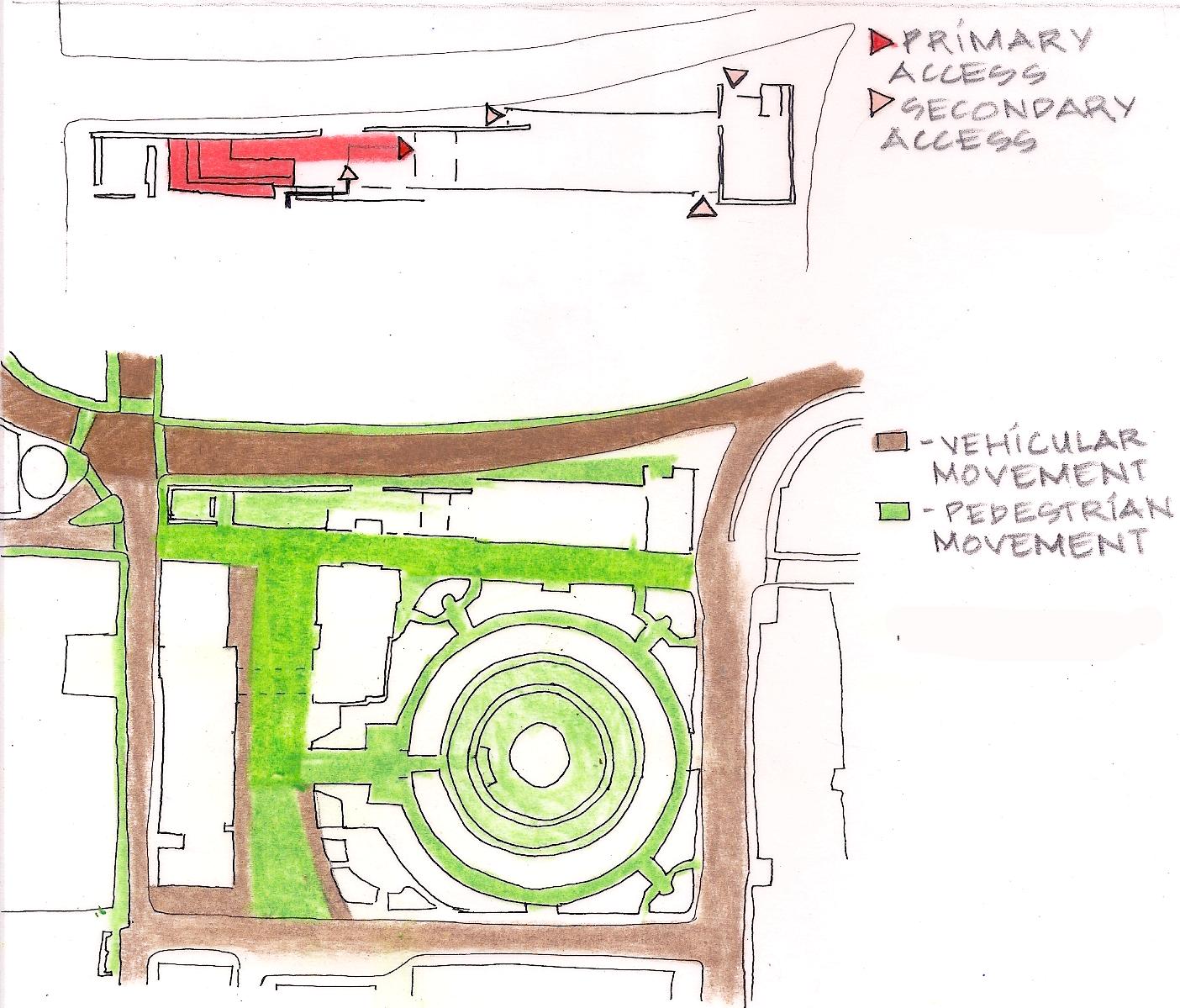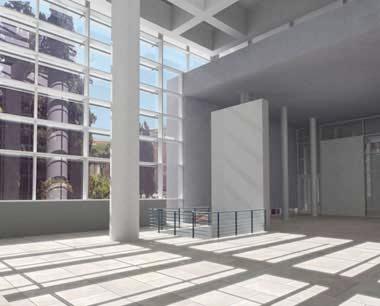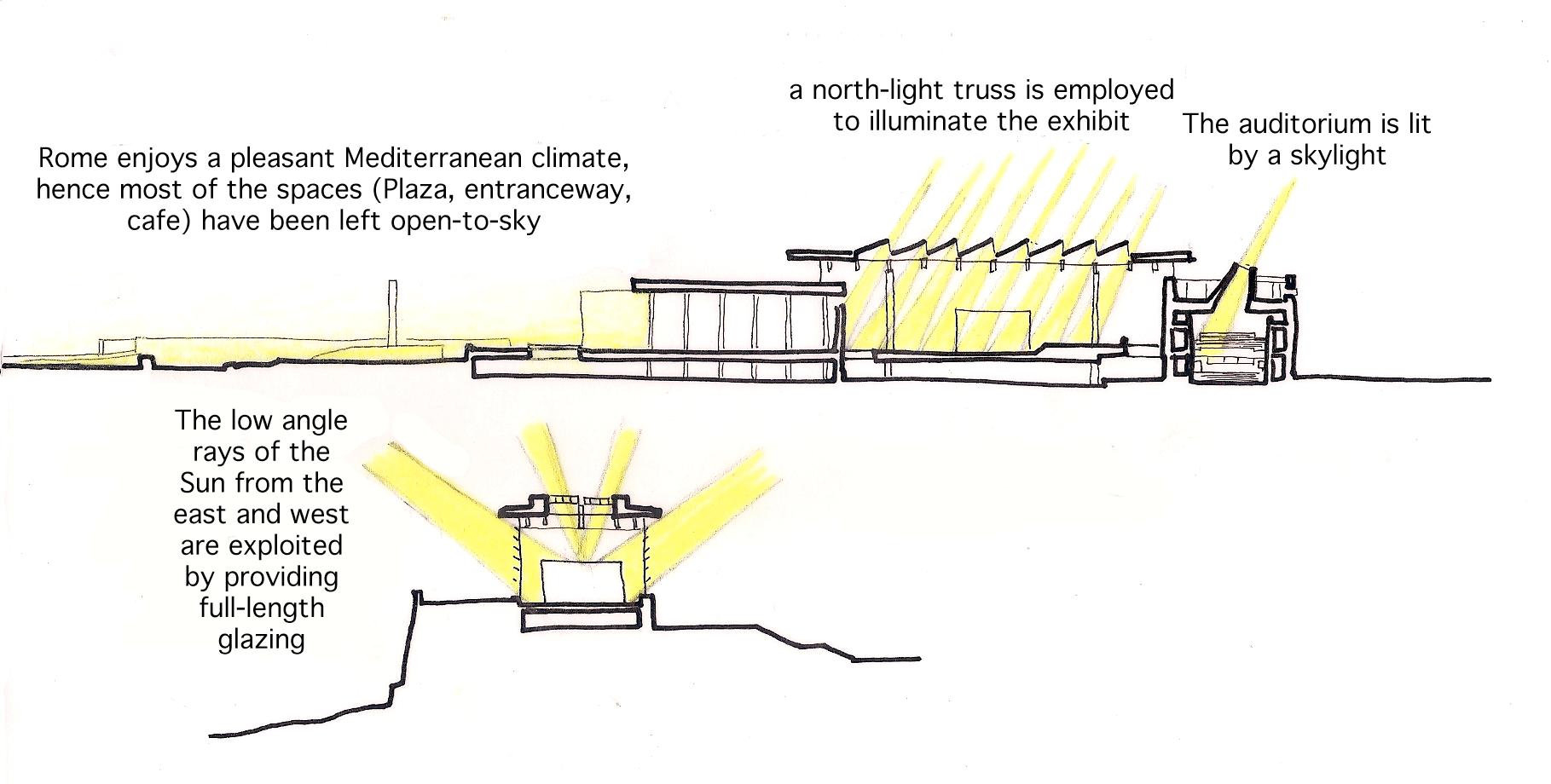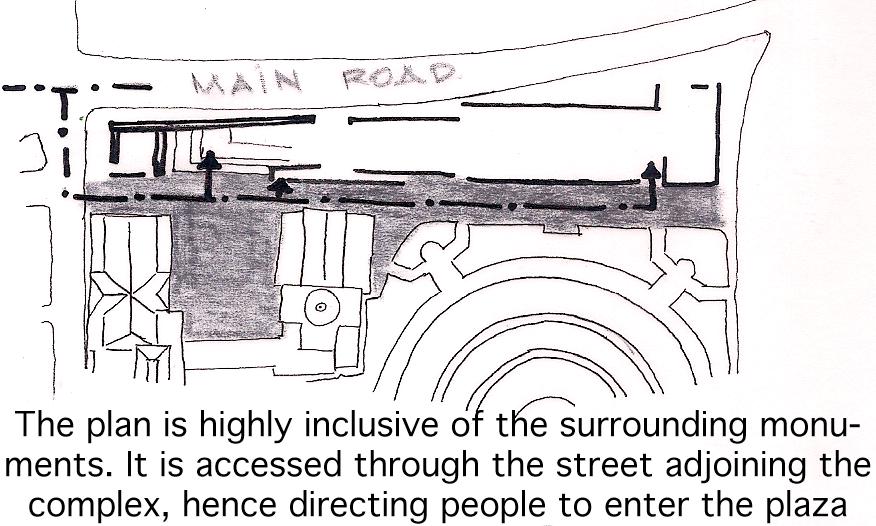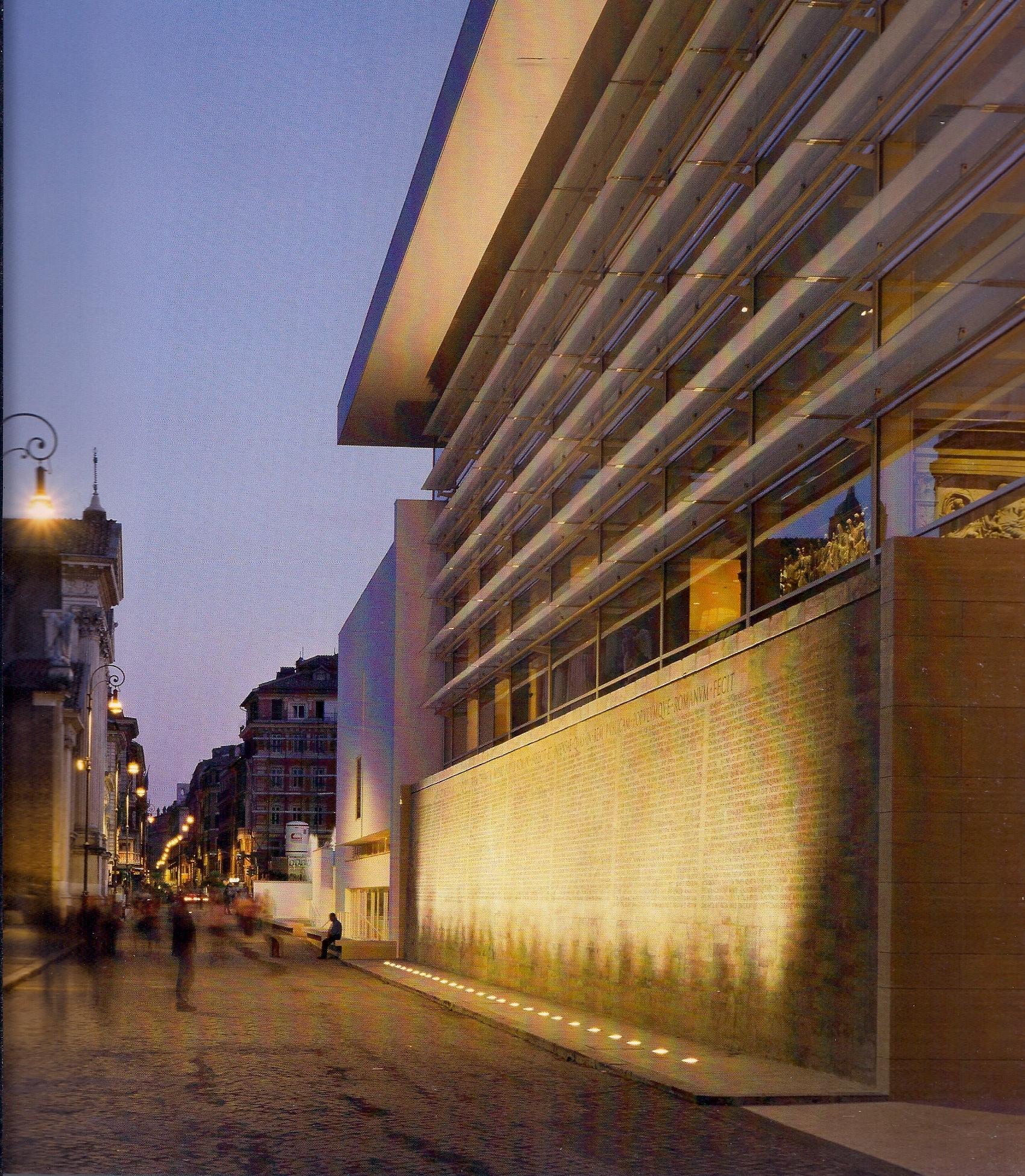Introduction
Project facts
Architect: Richard Meier
Commissioning Body: City of Rome
Total Floor Area: 4,250 square metres

Number of levels: 3
Date of completion: April 2006












This museum on the bank of the river Tiber was Designed as a new setting for the Ara Pacis, a sacrificial altar dating to 9 B.C. and now located on the western edge of the Piazza Augusto Imperatore. The structure consists of a long single-storey glazed loggia, elevated above a shallow podium, providing a transparent barrier between the embankment of the river Tiber and the Mausoleum of Augustus, built circa 28 B.C.

The altar was relocated from the Campo Marzio in 1938, a system of regulating lines was applied to the project to relate the present position to the original site. An artificial obelisk is used as a historical reference on the northsouth axis through the altar.

A predominant feature of the new building is a glass curtain wall 150 feet long and 40 feet high. The asymmetrical entry hall defined by seven slender columns leads to the main hall, which houses the Ara Pacis.
The roof over the main hall rests on four columns with skylights to maximize the natural lighting and eliminate “false shadows”. Outside the main structure a low travertine wall extending from within the main hall traces the shore of the river Tiber. An outdoor roof terrace above the auditorium functions as a bar and café with views of the Mausoleum of Augustus to the east and river Tiber to the west



